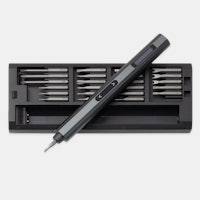Click to view our Accessibility Statement or contact us with accessibility-related questions



















Showing 1 of 49 conversations about:
A Tent Built for Two
By

Drop+Ultralight

Klunke
37
Jul 4, 2019
Please, please give us the solid inner, I need it here in Scandinavia. However then I want to buy both inners for maximum flexibility.

Cardamomtea
588
Jul 5, 2019
KlunkeI've never camped in Europe, but I see a lot of people requesting solid inner. There must be a good reason, so I'd like to know if someone has the time to explain.
Why do people want a rain fly and a solid inner, instead of just a rainfly? Or a single wall tent? For me the mesh inner keeps out bugs, and keeps me from touching condensation on the rainfly. (I do like a nice bathtub on a mesh inner to keep the dust and dirt from coming in.) If I had a solid inner then I would be dealing with lots of condensation. It seems like a single wall tent would be better here, so I think I'm missing something... thanks!

jari.perho
81
Jul 5, 2019
CardamomteaI camp in Finland and I don't get the obsession for a solid inner, either. Maybe it's because all Hilleberg tents come with solid inner tents and you have to buy the mesh inner tent separately (which most don't), or people want to use a three season tent in the winter. But even in that use, doors and vents should have a zippered panel of mesh behind the solid fabric and you close down everything only when you're stuck in a serious snow storm.

Klunke
37
Jul 5, 2019
CardamomteaIf you have around 40 F, wind and rain and rain as we are unfortunately often blessed with in the mountains by the Atlantic ocean even in the summer, you will get a chilly breeze through your tent with a net inner. A solid inner will stop this. It also stops rain that splashing in under the fly. With some tent you could instead close the fly and keep the wind out and trade the chilly breeze for having condensation nocked off the fly by the wind. This is maybe slightly better but not much of a solution. So knowing that Dan has found a fabric that would make a solid inner weighing only slightly more than a net inner, you really want one.
(Edited)

Cardamomtea
588
Jul 6, 2019
KlunkeStill trying to understand...
With a properly designed tent, if the rainfly is staked out and zipped up, no rain should be splashing far enough to get inside inner tent (I think a lot of tents don't have enough room between fly and inner, or the fly doesn't get close enough to the ground, so bouncing rain gets in the inner tent, but again this is poor tent design, not fault of mesh inner).
With the fly zipped up/closed, airflow decreases and [EDIT] condensation increases -- same goes for solid & mesh inners. But a solid inner guarantees condensation every time since your breath rises up, condenses on solid inner. In a mesh inner, condesation passes through mesh to condense in fly. When condensation falls from the fly, the noseeum mesh is tight enough to prevent it from dripping inward. It gets suspended on horizontal mesh, and on vertical mesh it rolls down, on the outside, thus never getting my bag wet.
I could see wanting a solid tent for extreme winds, when the condensation from your body raining down on your bag in the morning would be worth it to escape such winds. But in that case I'd think single wall would do?
I guess what I am wondering is why you would prefer a double wall solid inner tent to a single wall solid tent?
I think a hybrid inner would be ideal for high wind /dusty situations, where the inner was solid for about 24-30"... with the thought that a good portion of breath would rise vertically and pass through mesh ceiling to condense on fly.
TL;DR: why you would prefer a double wall solid inner tent to a single wall solid tent for the aforementioned conditions? Thanks!!
(Edited)

Klunke
37
Jul 6, 2019
CardamomteaStrongly disagree that condensation decreases with the fly zipped up and reduced air flow, it increases in almost all conditions.
A solid inner is made of the same type of fabric as sleeping bags, not the fabric of a rain fly, so it will not be like the the scenario you describe. Very breathable, it is almost impossible to get condensation on it though it can be wet from condensation from the fly though it makes a much better job than a net keeping it out of the inner tent even though a steep net can be ok. In well designed double wall tent you will have an ventilated gap between the inner taking away moisture created inside the tent and the fly while the solid inner keeps the air steady in the inner. The physics are different, and it makes a difference.
I know that from experience as well, I use both tents with a hybrid inner and a solid inner, you don't want to carry an inner if you don't need it. I actually rarely see the need for a full net inner, either I can do with a hybrid or I want full a solid inner. With a solid inner X-mid, I can get a tent much better suited for my hiking environment for a very modest weight increase. But if I buy this tent I want a net inner as well for a warm nice sunny overnighter in the lowlands and things like that, and it is nice to have more of contact with the outside world. If the X-mid comes as a 1-p DCF hybrid I will buy that as well.
The splashing is secondary, but for reasons I try to explain above, if you have rain but no wind you would want to pitch the tent with an air gap at the bottom to create draught between the outer and the inner. Then splash protection is handy.
I hope this gives some answers on why we are so much want a solid inner, otherwise just ask more.
(Edited)

Cardamomtea
588
Jul 6, 2019
KlunkeWe're on the same page regarding condensation increasing with rainfly zipped up :-) I re-read my comment and sure enough it looks like I'm saying it decreases -- oops! I'll edit that :-)
It sounds like the solid inner tents you have are made from a very breathable fabric; I look forward to trying one someday! I haven't experienced that kind of solid inner before, hence my comments about condensation on inner. Thank you for taking the time to explain to me where you're coming from; there are so many comments/votes for a solid inner that I figured I was missing some key information. :)

Klunke
37
Jul 6, 2019
CardamomteaYeah, you could say a net inter is bug safe and extremely breathable, a solid inner is bug safe, wind stopping and very breathable but it would not stop rain by itself.
I am glad that I could provide some information. I have learned so much from forums that it always feels good to be able to provide something of value for someone else.
You have to stay curious, right?

Minnehik
19
Jul 8, 2019
KlunkeI’ve had tents where the mesh goes down to 4”/10cm, with the tub floor only that high. I find them excessively drafty, with a breeze through the tent carrying my body heat away through my sleeping bag. (Yes, I am a cold sleeper.) I have two ZPacks tents, and find their tub floors are high enough most of the time, at about 7-8”/20 cm. If I were to buy another tent, I’d want partially “solid” side walls. They could be less porous than netting I think, not necessarily wind/waterproof. And for what it’s worth, I haven’t yet had any significant issues with condensation in my single-wall DCF tents.

Klunke
37
Jul 9, 2019
MinnehikA partial inner can be enough I guess, I have never owned one. I know from experience that a Zpacks bathtub is not enough to solve the problem for me when it is cold and winds are above 10 mph.

Minnehik
19
Jul 9, 2019
KlunkeI was quite cozy in my ZPacks in Patagonia, despite chilly high winds, but I’m careful with site selection. For this trip, I also bought a WM Versalite bag and and Xtherm mat, which I expect to use a lot. I’ve never slept so well on a trip. The combo is not very ultralight, but worth it to me.

Cardamomtea
588
Jul 9, 2019
MinnehikI think for colder weather, "modified ultralight" is the way to go :-) shivering at night is "stupid light" :-)
TomATX
23
Aug 5, 2019
CardamomteaWho recommends shivering at night? My base weight is 9 pounds with luxury items and perfectly cozy down to 20 degrees F. If it gets colder I can easily add a pound of insulation, and be safely with ultralight territory.

Cardamomtea
588
Aug 12, 2019
TomATXHi @TomATX I think you and I are in agreement here :-)
I was replying to @Minnehik 's comment, "the combo is not very ultralight, but worth it to me," regarding their combination of a Therm-a-Rest Xtherm and Western Mountaineering Versalite bag.
• TaR Xtherm regular is 15oz versus the TaR Xlite's 12oz (+ 3oz)
• WM Versalite 6' size is 32oz for 10⁰F bag versus a L/R 850 fill Enlightened Equipment 10⁰F Enigma at ~26.3oz. (+ ~5.7oz)
So it adds just shy of 9 oz to not shiver at night. I have taken the 10⁰F Enigma & Xlite to near 20⁰F at night and was a little cold. So I'm in agreement with Minnehik that an extra 9oz for a good night of sleep is a sensible decision.
I never like to assign a weight to the definition of ultralight. I think that's a fool's errand. To me, ultralight is carrying the minimum weight required to safely carry out your goals. If your goal alpine photography, carrying a camera would not disqualify you from ultralight. For me, carrying a camera is not ultralight, because photography is not my goal. I'm sure there are things I bring that others might not, for example, my Garmin InReach. That's heavy at 7.5oz!
The other side to ultralight, and again this is all just my personal opinion ;) is "carrying knowledge, not weight" -- e.g. knowing knots, how to pitch a tarp, navigation, first aid, multipurpose items... all that must be learned.
While I never like to carry more than necessary, I'm counting pounds, not ounces, when I go out in the dead of winter. There's not as much room for error at -30⁰F (-34.4⁰C).
PRODUCTS YOU MAY LIKE
Trending Posts in More Community Picks

Graham88
Completely surprised by the lack of blade diversity here on Drop...
I’ve been a collector of Blades since before my teens, and a retailer coming up on 15… or maybe 20 years. Drop has really been kind of an interesting experience for me, because I do occasionally get to see some unusual tech and sometimes EDC items that otherwise I might not have been aware of. And maybe it’s because I have a deep love of cutlery and bladed weapons, but I find myself trolling through the site looking at it what’s available; and it’s just it’s pretty much the same. And the bladed community here is just always confused me.. every single knife is about the same, they’re almost all drop points and although the handle materials change and brands change.. it’s really just the same knife over and over and over again... occasionally you’ll see a tanto or a slight variant; but rarely… and almost never a serrated blade. And I’m just deeply amazed at this diversion of serrated blades. And I’m just surprised there isn’t more of a request for diversity here.... and I...
Mar 12, 2020
JellyDPhoto
Can we get Sony E-Mount or other mirrorless camera options please..
Would be nice to see some Sony E mount full frame cameras on here. I currently shoot with a A99 and they killed the lense path for better or more option lenses and now is all E-Mount. 🤔
Jan 13, 2020
RayF
There Are Pandas, and Then There Are Pandas.
And this isn't either of them! The Pandas we're talking about here, are watches, not bears. And what got me thinking about them (again) was a link posted this morning by @cm.rook who pointed a few of us to the very attractive (and not terribly priced) Yema "Rallygraph" Panda which, in it's most traditional arrangement, looks like the one on the left, but can also be had in the version on the right: The model on the left is a true Panda, while the model on the right is called a reverse Panda. The reason for that distinction is clear--Panda bears, only come in the first arrangement. Now at this point, everyone should be thinking about the most well-know Panda, The Rolex Panda, which is actually a Daytona, and among Rolex Daytonas, the most famous of which is the Paul Newman Daytona, which was famous first, because it was Paul's, and second because it sold at auction for $17.8 million (US Dollars). The story of that auction is well-known so I'll only...
Nov 8, 2019




